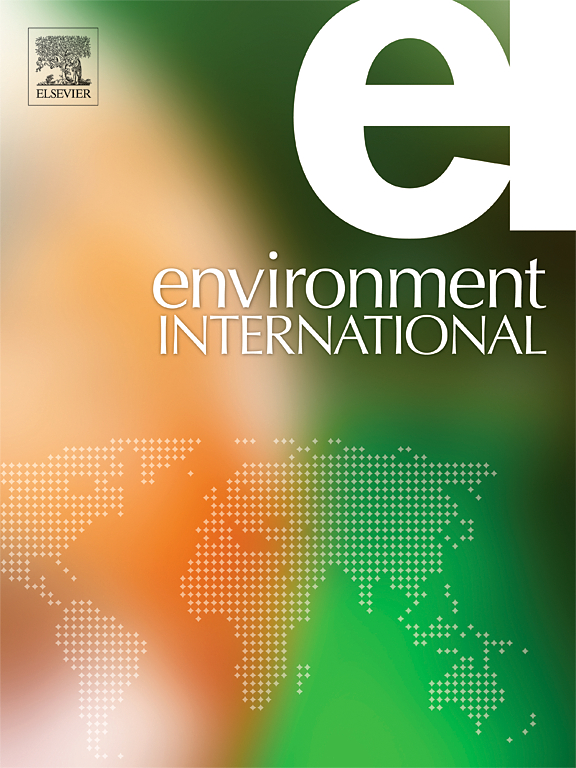乙基和新戊基硝酸盐的大气归宿:-OH-氧化机制、动力学特性和环境影响
IF 10.3
1区 环境科学与生态学
Q1 ENVIRONMENTAL SCIENCES
引用次数: 0
摘要
有机硝酸盐(RONO2)是二次有机气溶胶的重要组成部分。硝酸乙酯(EN)和硝酸新戊酯(NN)是大气中浓度较高的典型 RONO2,但它们的去向仍不清楚。本文利用量子化学计算和动力学建模研究了-OH引发的EN和NN降解机制和动力学。通过计算大气寿命,评估了EN和NN在环境中的持久性。出乎意料的是,水通过增加无吉布斯势垒对反应物的降解具有抑制作用,空气-水界面可以加速EN向CH3CHO的转化。值得注意的是,在 -OH、O2、HOx 和 NOx 的存在下,C 中心自由基的后续演化过程可形成多官能团含氧有机污染物、醛类和过氧酰基硝酸盐。毒理学评估表明,EN 和 NN 会对生态系统产生有害影响。这项研究从理论上更深入地揭示了 RONO2 在大气中的归宿和影响。本文章由计算机程序翻译,如有差异,请以英文原文为准。


The atmospheric fate of ethyl and neopentyl nitrates: ·OH-oxidation mechanism, kinetic property, and environmental impacts
Organic nitrate (RONO2) is an important component of secondary organic aerosol. Ethyl nitrate (EN) and neopentyl nitrate (NN) are prototypical RONO2 with high atmospheric concentrations, but their fate remains unclear. Herein, the ·OH-initiated degradation mechanism and kinetics of EN and NN were investigated using quantum chemical calculations and kinetics modeling. The environmental persistence of EN and NN was evaluated by calculating atmospheric lifetimes. Unexpectedly, the aqueous water has an inhibitory effect on the degradation of reactants by increasing the Gibbs-free barrier, and the air–water interfaces could accelerate EN transformation into CH3CHO. Notably, the subsequent evolution process of C-center radicals can form polyfunctional oxygenated organic pollutants, aldehydes, and peroxyacyl nitrates in the presence of ·OH, O2, HOx, and NOx. The toxicological assessment showed that EN and NN had harmful effects on ecosystems. This work provides a deeper theoretical insight into the atmospheric fate and influence of RONO2.
求助全文
通过发布文献求助,成功后即可免费获取论文全文。
去求助
来源期刊

Environment International
环境科学-环境科学
CiteScore
21.90
自引率
3.40%
发文量
734
审稿时长
2.8 months
期刊介绍:
Environmental Health publishes manuscripts focusing on critical aspects of environmental and occupational medicine, including studies in toxicology and epidemiology, to illuminate the human health implications of exposure to environmental hazards. The journal adopts an open-access model and practices open peer review.
It caters to scientists and practitioners across all environmental science domains, directly or indirectly impacting human health and well-being. With a commitment to enhancing the prevention of environmentally-related health risks, Environmental Health serves as a public health journal for the community and scientists engaged in matters of public health significance concerning the environment.
 求助内容:
求助内容: 应助结果提醒方式:
应助结果提醒方式:


